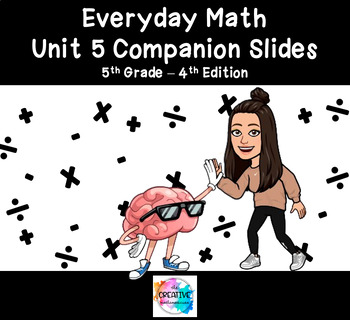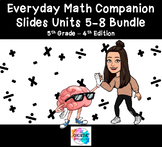Grade 5 - Unit 5 Lesson Guide - Everyday Math Google Slides
- Google Slides™

What educators are saying
Also included in
- Are you looking for a more efficient way to display charts, tables and other portions of your teacher manual than writing them on the board in real time? Do you enjoy having discussion questions posted to keep discussions focused in class? These slides are exactly what you are looking for!These slidPrice $15.99Original Price $19.96Save $3.97
- Are you looking for a more efficient way to display charts, tables and other portions of your teacher manual than writing them on the board in real time? Do you enjoy having discussion questions posted to keep discussions focused in class? These slides are exactly what you are looking for!These slidPrice $30.99Original Price $39.92Save $8.93
Description
Are you looking for a more efficient way to display charts, tables and other portions of your teacher manual than writing them on the board in real time? Do you enjoy having discussion questions posted to keep discussions focused in class? These slides are exactly what you are looking for!
These slides are intended to be used as a guide for each lesson within the Everyday Math Curriculum. It displays discussion questions, tables, and charts from the teacher's guide as they fit within each lesson. The opening slide for each lesson includes learning targets, and a displayed math message as well. Images are included with every lesson to make sure students know what supplies are needed at each point in the lesson. Slides are included to guide students through independent, partner, or small group work, and provide you with an easy spot to explain expectations for your students, as well as keep them posted for reference.
My students have benefitted so greatly from using these slides! They have helped to guide teacher thinking, and keep students focused throughout every lesson. You are going to love them!




